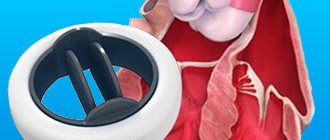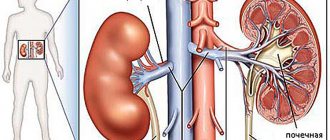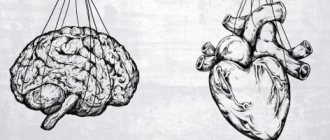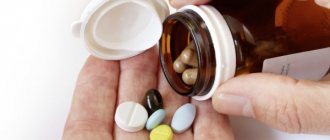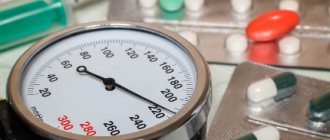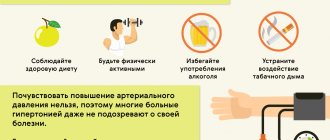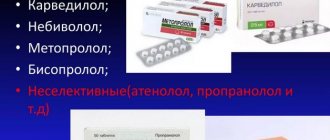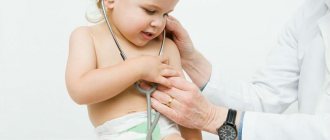The problem of arterial hypotension (low blood pressure) in children has become more common than before. Evidence suggests that hypotension is even more common in children than in adults. Unfortunately, this problem also affects newborns. For a child, blood pressure is considered low, the upper limit of which is no more than 100, and the lower limit is no more than 60. The risk group is schoolchildren, among whom girls are more susceptible to this condition. But blood pressure in children can be not only low, but also high. In this case, it is customary to talk about hypertension. Arterial hypertension, hypertension in children - a persistent increase in blood pressure above the 95th centile of the distribution scale of blood pressure values for a specific age, gender, weight and body length of the child. Normal blood pressure is considered to be values of systolic and diastolic blood pressure that do not go beyond the 10th and 90th centiles.
Causes
It is not always possible to find pathological reasons for a persistent decrease in pressure. This usually happens with primary hypotension, which, however, has its own reasons:
- asthenic physique;
- puberty;
- hereditary predisposition;
- problems during pregnancy and childbirth;
- features in the child’s character, for example, a tendency to depression;
- overwork;
- stress.
Secondary hypertension has causes that are associated with diseases of internal organs and systems: kidney disease, pneumonia, cardiovascular disease, adrenal disease, etc. Also, this form of hypotension can develop due to the use of certain medications, especially considering that children's bodies are most sensitive to medications. But a child’s blood pressure can increase for various reasons. This may depend on hereditary, external factors, and specific age. If a pregnant woman smokes during pregnancy, the risk that the breastfeeding baby will have health problems increases. Diseases of the endocrine system also cause hypertension. Children with VSD are considered potential hypertensive patients. An overdose of some nasal drops leads to a narrowing of blood vessels not only in the nose, but even in the arteries. Because of this, blood pressure increases. It has been noted that high blood pressure is often characteristic of those children who are obese or overweight. Poor nutrition, low physical activity, sedentary lifestyle, stress, school workload. All this can cause health problems.
Normalization of blood pressure using therapeutic methods
Therapy for adolescent hypertension is selected individually by the attending physician.
Typically, to normalize blood pressure, adolescents are first prescribed treatment that does not involve medications. This includes a healthy lifestyle, hardening, proper nutrition and individually selected physical activity.
Among herbal preparations, rosehip infusion is used. It should be borne in mind that herbal infusions gently reduce high blood pressure in adolescents, but do not affect the causes of its occurrence.
Medicines for the treatment of persistent hypertension in adolescents can only be taken as prescribed by a doctor! Especially if there are sharp jumps in blood pressure.
Usually, for teenagers, the attending physician selects gentle medications in small doses. You cannot use such drugs on your own, since most of them have different age restrictions. Properly selected individual therapy not only helps normalize blood pressure, but also improves the functioning of other organs and the general condition of the body.
As a supplement, if there is no diabetes or diseases of the gastrointestinal tract, you can use folk remedies: natural pomegranate, carrot and beet juices, a mixture of honey with cranberries and lingonberries, raw sunflower seeds. Drinking 2-3 glasses of juice a day is enough.
Adolescent hypertension should only be treated by a doctor
Symptoms
If hypotension manifests itself in a newborn, then the parents do not have any special problems, because it is difficult to determine from his condition that there are health problems. This is explained by the fact that the child sleeps a lot, rarely cries, and is in constant peace. Children who have decreased muscle tone, legs and arms can extend more than 180 degrees at the joints. In addition, the following symptoms are observed: a delay in the rate of motor development and impaired swallowing and sucking. Dizziness, fainting, nosebleeds, emotional lability, decreased performance, joint and muscle pain, sudden deterioration in health, and headache may also occur. With a slight increase in blood pressure, the child’s health may be good. Although the child may quickly get tired and irritated. But if the pressure rises strongly, the child will always feel unwell. Among his complaints are the following: headache, dizziness, pain in the heart, palpitations, memory impairment. If a hypertensive crisis occurs. Symptoms such as severe headache, nausea, blurred vision, convulsions, impaired consciousness and others may be observed.
Signs of teenage hypertension
Normal blood pressure in adolescents aged 13-17 years is considered to be 120/80 mmHg. Art. with a deviation of 10 units up or down.
Blood pressure does not remain constant throughout the day. It changes depending on the time of day, the emotional state of the teenager, his general health, etc.
During puberty, the average blood pressure in boys may be slightly higher, and in girls slightly lower than normal. This is due, first of all, to hormonal changes in the body. It is at this age that hypertension is one of the most common diseases, but, as a rule, it is a side symptom of other pathologies.
Adolescents rarely complain of increased blood pressure and control it, so hypertension is often discovered by chance. Parents should be alert to the following symptoms that may indicate hypertension:
- headache;
- increased fatigue and general weakness;
- dizziness;
- decreased vision, frequent blinking.
In these cases, you need to see a doctor and get blood and urine tests to check your cholesterol, hormones, sugar and uric acid levels. Often, the doctor additionally prescribes an ultrasound examination of the liver, kidneys and other organs.
Frequent headaches may be the first symptoms of hypertension in a teenager
Diagnostics
To make a diagnosis, first of all, blood pressure measurements are needed. This is usually done in a sitting position for the first half. The measurement occurs three times, the interval between these is three minutes. Also, it is not done immediately after mental or physical stress, but after an hour has passed. In addition, the following diagnostic methods are used: ECG, ECHO-kg, ABPM, study of autonomic homeostasis, EEG registration, psychological testing, clinical and biochemical blood tests, consultation of the necessary specialists in order to exclude secondary arterial hypotension. To confirm the diagnosis of arterial hypertension, daily monitoring and tests with different types of stress are used. During the study, it is important to identify the cause of the increase in pressure if hypertension is secondary. This is what helps the doctor prescribe effective treatment. If the cause of hypertension is not eliminated, treatment measures will not give the desired effect, the result will be temporary.
Medicines for high blood pressure
Medicines to increase blood pressure are prescribed in emergency cases or for prolonged hypotension. The choice of drug is based on the nature of the disease and examination results.
The main groups of drugs for lowering blood pressure:
- Caffeine-based drugs are used to urgently increase blood pressure in critical situations. They are administered intramuscularly or intravenously by emergency or hospital doctors. Caffeine is contraindicated in cases of cardiac arrhythmias and heart failure.
- Analeptics that affect the respiratory and vasomotor centers of the brain.
- Glucocorticoids - increase blood pressure by constricting blood vessels; they are used quite rarely due to the large number of side effects.
- Adrenergic agonists that affect the muscles of the heart, blood vessels and some other drugs.
Any drugs to increase blood pressure are used only as prescribed by a doctor and strictly in the dosage prescribed by him.
Treatment
Treatment can be medicinal or non-medicinal. If arterial hypotension occurs in a labile form, then preference is given to the second type of treatment, which includes several methods. It is necessary to normalize the daily routine, which includes the child’s correct combination of study and rest. It is important to take timely breaks. This also includes quality sleep at night, as well as daytime rest. Don't forget your daily walks. A child should be in the fresh air for about two hours a day. Meals should be taken four to six times a day. At the same time, there should be a sufficient amount of salt in the food. It is important that the products contain a sufficient amount of nutrients and microelements, which are very important for the child’s body. It is important to maintain optimal water regime. Massage has a good effect. Recommended area: hands, collar area and calf muscles. If such methods are insufficient or childhood hypotension has progressed to a more serious method, the doctor will prescribe the necessary medications. Treatment of hypertension depends on many factors. If arterial hypertension in children and adolescents is accompanied by a slight increase in pressure, non-drug therapy is used. If a child is overweight, it is necessary to reduce body weight. This is achieved by increasing physical activity and normalizing nutrition. If the school assigns a lot of homework, you need to make sure that this does not affect the health and condition of the student. If lifestyle changes do not lead to a decrease in blood pressure or the levels are high, drug treatment is prescribed. Antihypertensive therapy is also prescribed for those children who suffer from diabetes mellitus and chronic kidney diseases. Most of the drugs prescribed for adults are also used for younger patients. But doses and medications are always selected individually.
Increased blood pressure without medication
A contrast shower will help raise your blood pressure.
Photo: andranik.h90 / freepik.com Some people do not trust traditional medicine and prefer to be treated with folk remedies. If you feel unwell due to a sudden drop in blood pressure, for example, due to a sudden change in weather or a long flight, you can try to raise it without medication:
- take a contrast shower;
- eat a few slices of dark chocolate;
- drink a couple of cups of strong natural coffee - yes, coffee can really help quickly.
However, if hypotension is associated with existing diseases, it is better to avoid such express methods so as not to harm the body.
Disease prognosis
If the patient strictly follows all the recommendations of the attending physician, the prognosis of the disease is positive. Recovery occurs in a short time. Difficulties in treatment can be caused by primary hypertension, i.e. a pathology that has developed independently and is not a complication of another disease. In this case, the outcome depends on the effectiveness of the pathology that provoked its appearance.
Symptoms of high blood pressure
The symptoms are similar to hypertension in adults. Signs:
- Headache that becomes more intense in the morning.
- Dizziness and tinnitus.
- Psycho-emotional disorders: the child becomes irritable, mood changes sharply.
- Fatigue and general weakness.
Of course, treatment is necessary in most cases.
But if hypertension occurs due to age-related hormonal changes, then after 17 years this syndrome goes away on its own. Quite often, parents do not even know that their child has high blood pressure. And poor health and behavioral changes are attributed to the transition period. If the increase occurred due to certain pathological conditions, then therapeutic therapy is simply necessary. In order to determine whether a child has a systematic increase in blood pressure - one measurement is not enough, at least a three-fold study is needed. Hypertension in adolescence is common.
Causes of hypertension
Primary or essential hypertension accounts for more than 90% of all cases. The root causes of hypertension are unknown, but the increase in pressure is based on a violation of vascular tone and water-electrolyte balance. Treatment of hypertension is aimed at eliminating this imbalance
Secondary or symptomatic hypertension in the general structure accounts for less than 10% of cases. This form of the disease is one of the symptoms of the underlying disease. Most often the reasons are the following:
- kidney diseases (pyelonephritis, hydronephrosis, glomerulonephritis, etc.);
- thyrotoxicosis;
- hypothyroidism;
- damage to the adrenal glands (pheochromocytoma);
- stenosis (narrowing) of the renal artery.
It is important to consider not only the causes of hypertension, but also the factors that influence the increase in blood pressure. These include:
- frequent nervous breakdowns, repeated intense overstrain, severe anxiety;
- night work, as well as work in conditions of constant noise and vibration;
- burdened heredity;
- excess salt intake;
- the presence of other chronic diseases - obesity, diabetes, kidney disease;
- bad habits (smoking, overeating, alcoholism);
- physical inactivity.
Hypertension at a young age is more common in men, and in the older age category, heart disease occurs in approximately equal proportions. Often women experience hypertension for the first time during pregnancy. After menopause, women often notice an increase in blood pressure, this is due to hormonal changes in the woman’s body: estrogens, actively produced at a young age, prevent the development of hypertension, and then their quantity drops sharply.
Prevention of hypertension
The consequences of hypertension are determined by the stage of the disease and the rate of its progression. Rapid development, severe course and stage 3 worsen the quality of life and lead to dangerous complications: renal failure, heart attack and stroke. Until now, mortality from cardiovascular diseases, which includes hypertension, occupies a leading position.
Early detection and treatment with regular blood pressure monitoring can slow the progression of hypertension and reduce the incidence of dangerous complications. Primary prevention consists of eliminating existing risk factors. The following measures can achieve a positive effect in the form of normalization of blood pressure:
- quitting smoking and excessive alcohol consumption;
- moderate physical activity;
- limiting the amount of food consumed;
- reducing the amount of table salt consumed (low-salt diet);
- psychological relief.
The effectiveness of prevention, as well as treatment, largely depends on the patient himself. In most cases, the doctor is not able to monitor the patient’s compliance with all recommendations. Do not neglect the advice of doctors and carefully follow their prescriptions - this way you will avoid dangerous complications
